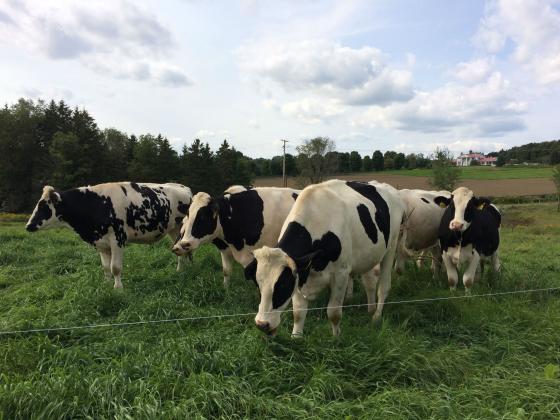Posted February 3, 2025 at 04:50pm by kelly@vsjf.org
New England Feeding New England Project (NEFNE)

VSJF continues to provide important leadership for the New England Food System Planners Partnership, a collaboration between seven state-level organizations, six state agricultural, economic and environmental department representatives and Food Solutions New England (FSNE).
NOTE: This story originally appeared in the VSJF Impact Report 2024. Click here to read the entire report.
Our Impact
Since its release in June 2023, the Partnership has made over 100 presentations across the six New England states to share out the findings of its foundational research—New England Feeding New England: A Regional Approach to Food System Resilience. For most of 2024, the Partnership focused on conducting local food counts in the other five New England states, building off the methodology developed in Vermont and conducted four times between 2011–2020. In September, the Partnership released a detailed analysis of local food spending in New England—Regional Food Count 2022. The report reveals that $2.28 billion or 3.1% of New England’s total $120.6 billion in food, beverage and alcohol expenditures were directed towards local and regional products, highlighting a critical area for potential growth and investment. Of the six states, Vermont has the highest percentage of local at 10.1% and the third highest in overall dollars spent on local food.
Also in 2024, the Partnership released an interactive Data Dashboard that contains all the graphics from the NEFNE reports and the six State Briefs released in 2023, as well as the new Local Food Counts data.
Why It’s Important
The 2022 Local Food Counts data will encourage the region to work more collaboratively towards a 30% regional food consumption by 2030 goal. By equitably expanding our regional food system, we can strengthen New England’s economy, be more climate resilient and food secure. It is going to take all of us working together—businesses, community groups, governmental agencies, and eaters—to reach this goal but we all have a role to play and we will be better off for it.
What We Need
Local and Regional Food Availability: For New England grocery stores, restaurant owners and chefs, sourcing local and regional food can be an economic boost for businesses in the region. By including better signage and labeling on shelves or featuring menu items that promote local farms, and seafood producers, this commitment from New Englanders to New Englanders drives sales, keeps dollars close at home and supports jobs for the community.
Institutions such as colleges, hospitals, and schools, have already implemented strategies to expand local and regional food offerings; more can be done through state policy and funding commitments.
Residents and business owners can help strengthen our regional food economy by choosing local and regional food when making purchases, keeping our dollars closer to home.
Farmers, fishers and food manufacturers can do their part by both selling more of what is already produced in the region, throughout the region, and producing more of what 15.3 million New Englanders eat every day.
Choose Local & Regional Food: The single best way we can make a difference now is to choose local and regional food items over those from far away. By shifting even just $10 per week from your typical food purchases to local or regional food items goes a long way toward supporting our regional food economy. Every dollar counts and helps our overall effort to achieve our New England goal of 30% regional food consumption by 2030!
“The Local Food Count 2022 report clearly highlights the opportunity to increase the amount of Maine and regionally-grown and produced food consumed in our state. We are committed to continuing our work to enhance farm and food production infrastructure and investment, market access, food security, and more in support of getting more Maine foods onto the plates of our friends and neighbors—here in Maine and regionally.” –Commissioner Amanda Beal, Maine Department of Agriculture, Conservation and Forestry
